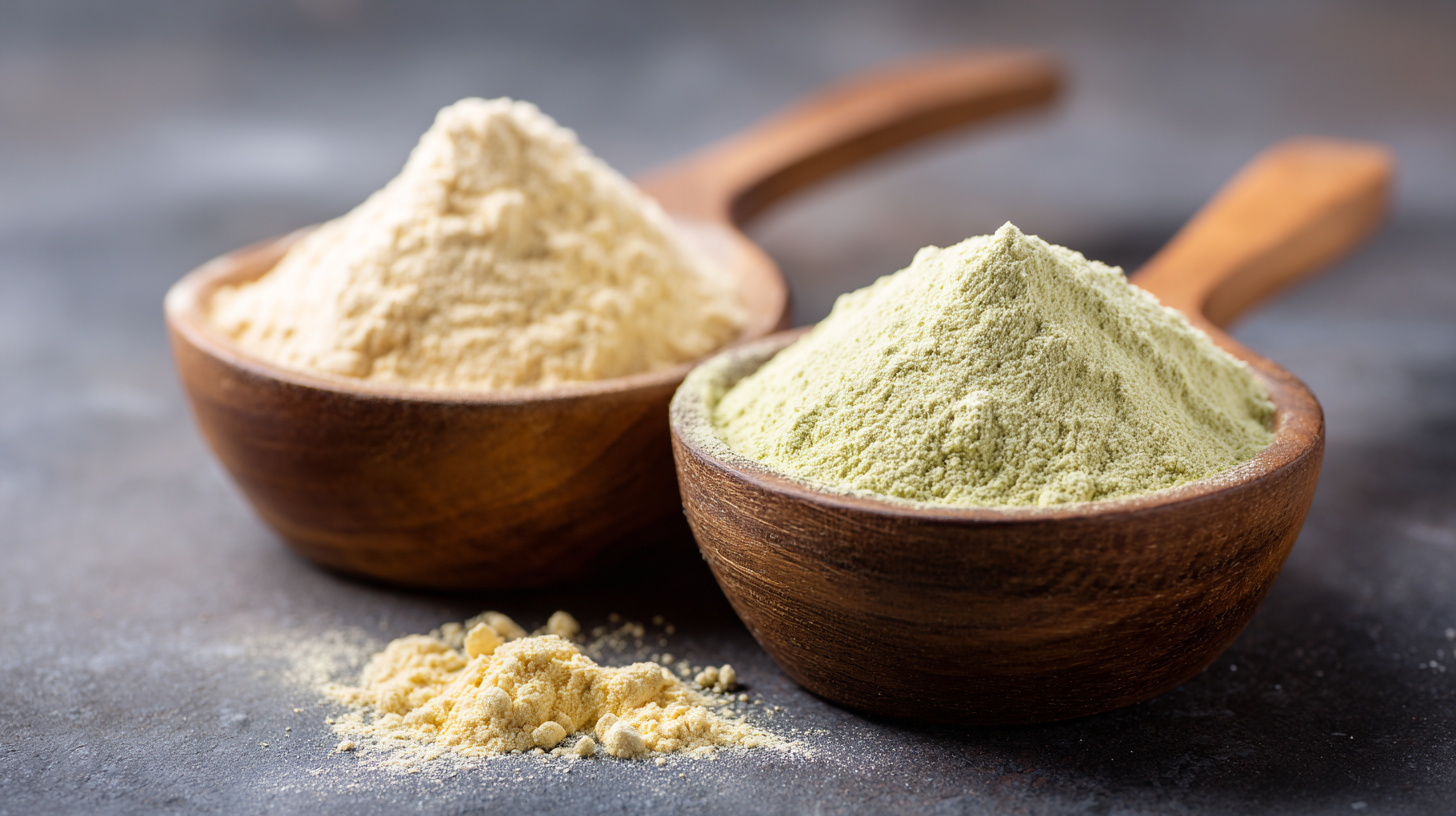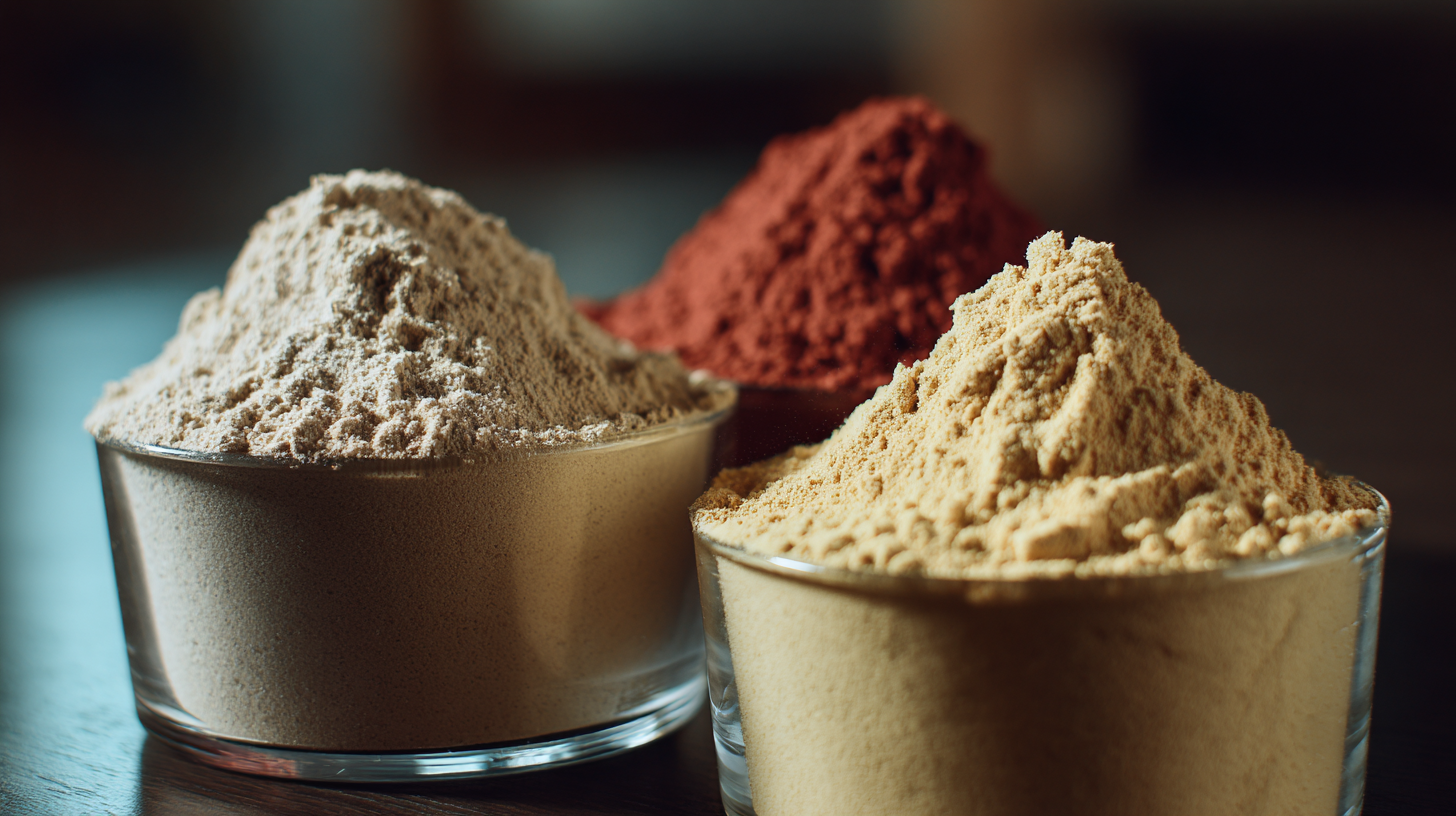In recent years, the global market for protein powders has witnessed significant growth, driven by the increasing demand for high-quality nutritional supplements and the rising popularity of fitness and wellness trends. According to a report by Allied Market Research, the protein powder market is expected to reach $22.5 billion by 2027, with "Muscle Protein Powder" being a key segment capturing the interest of consumers worldwide. Particularly, China's emerging protein powder industry has positioned itself at the forefront of this trend, offering innovative and superior products that cater to both athletes and health-conscious individuals. As the focus on clean labels and ingredient transparency continues to rise, Chinese manufacturers are responding with high-quality formulations that not only enhance muscle recovery but also promote overall health, thereby driving global demand for these nutritional powerhouses.

The global nutrition market is witnessing a significant shift, driven by the rising popularity of Chinese protein powders. As consumers become increasingly health-conscious, the demand for high-quality protein sources continues to surge. Chinese manufacturers have recognized this trend and are now emphasizing the improvement of their production processes and ingredient sourcing, resulting in protein powders that not only meet but exceed international standards. These products are often rich in essential amino acids and are derived from various sources, including soy, peas, and rice, catering to diverse dietary needs.

Additionally, the influence of Chinese protein powders extends beyond mere product quality. The strategic marketing approaches adopted by these companies are also playing a crucial role in shaping consumer preferences worldwide. By leveraging digital platforms and influencer partnerships, Chinese brands are effectively communicating the benefits of their products to a global audience. This not only enhances brand visibility but also fosters trust, encouraging consumers to incorporate these protein powders into their daily nutrition regimens. As Chinese protein powders continue to expand their footprint, their impact on the global nutrition landscape becomes increasingly prominent, reshaping how consumers approach dietary supplements.
Chinese quality protein powders are increasingly recognized for their diverse applications across several key industries. In the realm of sports nutrition, these protein powders are favored by athletes and fitness enthusiasts seeking to enhance their performance. The high-quality protein derived from sources such as whey, soy, and pea is not only efficient for muscle recovery but also supports overall health and endurance. With a growing emphasis on fitness, the demand for these products continues to surge, allowing brands to innovate and provide tailored solutions for consumers. Moreover, the food and beverage industry is witnessing a significant transformation with the incorporation of protein powders into functional foods and health-conscious products. Manufacturers are integrating these powders into snacks, meal replacements, and beverages to meet the rising consumer demand for nutritious options. This trend is further supported by the increasing interest in plant-based diets, where protein powders from legumes and grains are becoming popular, catering to both vegetarian and vegan populations. The versatility of Chinese protein powders thus plays a pivotal role in helping companies deliver superior nutrition tailored to modern lifestyles.
The growing global demand for high-quality protein powders, particularly from China, reflects a significant shift in nutritional priorities among consumers. The U.S. protein supplement market is projected to reach a staggering $9.88 billion in 2024, with further growth anticipated to $10.88 billion by 2025 and a remarkable $22.58 billion by 2032. This surge indicates a heightened awareness of the vital role protein plays in enhancing immune function and overall health, as outlined in national nutritional initiatives emphasizing the importance of quality protein intake.
When choosing the right protein powder for specific nutritional needs, one should consider various factors including type, quality, and purpose of protein supplementation. As reported, the global whey protein market is expected to grow from $12.64 billion in 2024 to $22.63 billion by 2032, with a compound annual growth rate of 7.5%. This growth highlights the increasing preference for whey protein among health-conscious consumers, due to its quick absorption and rich amino acid profile, making it an optimal choice for muscle maintenance, particularly among aging populations who may experience reduced appetite and nutrient intake. Thus, selecting a protein powder that aligns with individual health goals is crucial in today's evolving nutritional landscape.
| Protein Source | Protein Content (per serving) | Amino Acid Profile | Additional Ingredients | Best For |
|---|---|---|---|---|
| Whey Protein | 20g | Complete Amino Profile | Lactose, Sugar | Muscle Recovery |
| Casein Protein | 24g | Rich in Glutamine | Calcium | Slow Release |
| Soy Protein | 25g | Complete Amino Profile | Isoflavones | Vegetarian |
| Pea Protein | 21g | Rich in BCAAs | Fiber | Hypoallergenic |
| Rice Protein | 18g | Incomplete Amino Profile | Low Allergen Potential | Easy Digestion |
The surge in global demand for plant-based protein powders is primarily driven by the innovative production trends emerging from China. With the vegetable protein powder market expected to reach $4.7 billion by 2025 and grow further to $7.1 billion by 2033, the emphasis on health-conscious nutrition has redefined consumer preferences. Among various sources, pea protein has gained a significant market share, becoming a favorite among fitness enthusiasts and health-conscious individuals alike.
**Tip:** When choosing a protein powder, consider the quality and source of the protein. Pea protein, for instance, is not only rich in essential amino acids but also easily digestible, making it an excellent option for those with dietary restrictions.
The protein bar market is also witnessing impressive growth, projected to rise from $4.68 billion in 2022 to $7.07 billion by 2029. This trend reflects an increasing trend of consumers integrating protein into their diets, surpassing the traditional athletic demographic.
**Tip:** Look for protein bars with minimal added sugars and natural ingredients to ensure you’re making a healthy choice. Always check the protein content per serving to meet your nutritional goals effectively.

Chinese protein powders are rapidly gaining popularity among athletes and fitness enthusiasts worldwide, primarily due to their impressive nutritional profiles and health benefits. These powders, sourced from high-quality ingredients like soy, pea, and rice, offer a complete amino acid profile that is essential for muscle recovery and growth. Athletes are increasingly turning to these products to support their rigorous training regimens, as they not only enhance performance but also aid in reducing muscle soreness and improving overall recovery time.
In addition to their amino acid content, many Chinese protein powders are enriched with valuable nutrients such as vitamins, minerals, and antioxidants. This makes them a versatile choice for those looking to boost their nutritional intake. For fitness enthusiasts, incorporating these protein powders into their diet can help in achieving their body composition goals, whether it's building lean muscle, losing weight, or improving endurance. As global demand for superior nutrition continues to rise, Chinese protein powders are set to play a pivotal role in the health and wellness industry, appealing to those who prioritize both quality and effectiveness in their supplementation.
